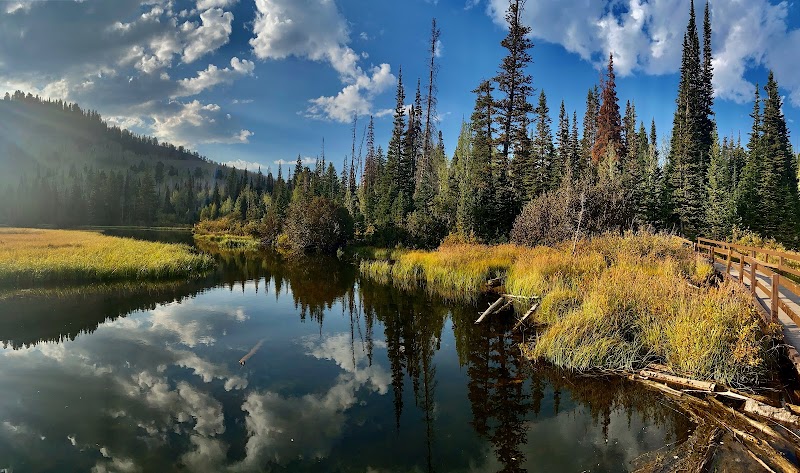
Utah Lake Triathlon: A Dynamic Adventure in Pleasant Grove
The Utah Lake Triathlon in Pleasant Grove blends swimming, biking, and running in an accessible yet spirited course. With clear water, varied terrain, and foothill trails, it invites athletes to engage fully with a practical and invigorating challenge.
Hydrate Strategically
Carry a lightweight hydration system and use race stations to avoid dehydration, especially during midday sun.
Choose Versatile Footwear
Use trail running shoes with solid grip for the run portion to handle rocky, uneven foothill paths safely.
Wetsuit Use Depends on Water Temperature
Check lake temps before race day; wetsuits can improve swim comfort and speed in cooler waters.
Time Training for Early Mornings
Prepare for cooler, calm conditions in early mornings and stronger sun later, adjusting pacing accordingly.
Utah Lake Triathlon: A Dynamic Adventure in Pleasant Grove
The Utah Lake Triathlon in Pleasant Grove, Utah, offers a well-rounded outdoor challenge where water, road, and trail meet. The race combines a 0.93-mile swim across Utah Lake’s steady currents, followed by a 24.8-mile bike ride through the valley’s varied terrain, and finishes off with a 6.2-mile run across rolling foothills. This triathlon demands respect from athletes ready to engage with a course that’s fiercely itself—where every leg tests endurance and demands practical preparation.
From the lake’s clear surface that seems to dare swimmers onward with its gentle but insistent waves, to the bike routes threading through sunlit orchards and patches of scrub, the course holds straightforward but effective challenges. The final run reaches up toward the nearby Wasatch foothills, where dirt trails push runners to find steady footing on loose rocks and uneven paths. It’s an adventure measured not only in distance but in the varied pace and focus each segment requires.
Practical details matter here: wetsuits are recommended depending on early summer water temps, and bike setups should optimize for road speed with some capacity to absorb minor bumps on less smooth stretches. Runners benefit from trail shoes with firm grip, especially if fatigue sets in near the end. Hydration stations pepper the course, but carrying lightweight hydration packs or bottles is wise—a measured compromise between speed and comfort.
Timing your training to tackle this triathlon usually points to late May through early July when weather strikes a balance — early mornings bring cool air that’s easy to breathe, though midday sun can intensify quickly. Pleasant Grove’s broad skies and the lake’s reflective surface amplify the day’s energy, while the foothills’ breeze shifts, playing between warm and fresh. This race’s rhythm moves with these conditions, asking athletes to tune into their environment and adapt.
Whether you’re an experienced triathlete or stepping into multi-sport events for the first time, the Utah Lake Triathlon offers an immersive experience paired with practical demands. It’s not about conquering the course but engaging with its elements—swimming with the lake’s pulse, cycling through the valley’s quiet stretches, and running where the trail edges toward open sky. Preparation is straightforward, but the experience itself holds a compelling call to be ready, alert, and willing to push through the day’s shifting pace.
Nearby Trips
All Adventures
Boat Charters
Water Activities
Adventures near Pleasant Grove, Utah
Discover the unique and memorable adventures that make Pleasant Grove, Utah special.
Frequently Asked Questions
What is the layout of the Utah Lake Triathlon course?
The race starts with a 0.93-mile swim across Utah Lake, followed by a 24.8-mile bike ride cycling through Pleasant Grove’s valley roads and finishes with a 6.2-mile run across the nearby foothills on mixed terrain.
Is the water temperature suitable for swimming year-round?
Water temperatures vary seasonally; wetsuits are recommended for spring and fall races when the lake can be chilly, but summer races often allow for swim briefs or suits alone.
What kind of terrain should I expect running the course?
The run follows dirt trails with rocky sections in the foothills, requiring trail running shoes with good traction and ankle support, plus steady footing during fatigue.
Are there aid stations on the course?
Yes, there are several well-positioned hydration and nutrition stations along the bike and run sections, but bringing personal hydration is advised to maintain steady fluid intake.
What’s the best way to prepare for the triathlon’s varied terrains?
Mix training: swim in open water if possible, practice road biking with intermittent rough pavement, and run on trails to simulate course conditions for technical footing and endurance.
Can beginners participate in the Utah Lake Triathlon?
Yes. While the course offers challenges, it's approachable with proper training and preparation. Beginners should focus on technique, pacing, and gear suited to their experience level.
Recommended Gear
Wetsuit
Provides warmth and buoyancy for swim legs during cooler lake temperatures.
Road Bike with Clipless Pedals
Optimized for speed and efficiency over paved roads during the cycling leg.
Trail Running Shoes
Offers traction and support on uneven terrain during the run through foothills.
Lightweight Hydration Pack
Allows for continuous hydration during the race’s longest segments under heat.
Local Insights
Hidden Gems
- "The 'Gooseberry Ridge' viewpoint on the run offers unobstructed views of Utah Lake’s southern expanse, often missed by first-timers."
- "Secret orchard trails near the bike course provide shade and glimpses of Pleasant Grove’s agricultural history."
Wildlife
- "Look for osprey circling overhead during the swim, and keep an eye out for mule deer near the run’s foothills in early morning."
- "Waterfowl including great blue herons are common along Utah Lake’s edges, adding quiet life to the race environment."
History
"Utah Lake and Pleasant Grove have deep roots in Utah’s pioneer and Native American history. The lake was historically vital for irrigation and settlement, shaping the region’s agricultural identity."
